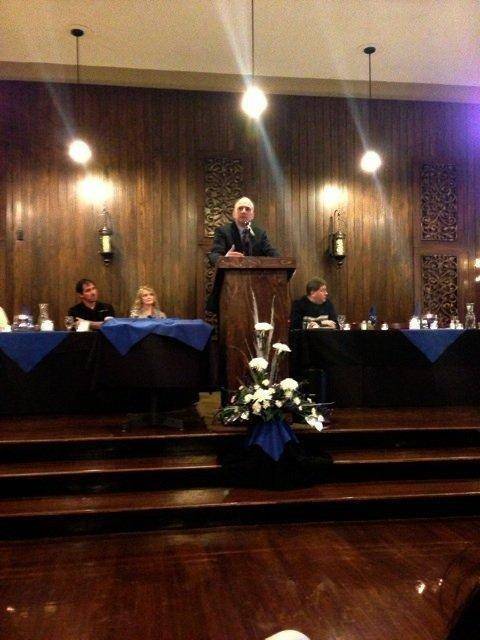At the annual Carbon County Chamber Awards and Installation Dinner, Dr. Robert Behunin of Utah State University, spoke about some upcoming projects that USU-Eastern and USTAR project were involved with.
One project that appeared to be on the verge of taking off is involving coking coal production. USU-Eastern representative, Scott Hill, is spearheading the Bravas project and is excited with the progress being made.
Coking coal has been a staple in the Carbon and Emery area, but traditional coking coal must also have low sulphur and phosphorous contents. Almost all metallurgical coal is used in coke ovens. Coking coal is converted to coke by driving off impurities to leave almost pure carbon. The physical properties of coking coal cause the coal to soften, liquefy and then resolidify into hard but porous lumps when heated in the absence of air.
The coking process consists of heating coking coal to around 1000-1100ВєC in the absence of oxygen to drive off the volatile compounds (pyrolysis). This process results in a hard porous material – coke. Coke is produced in a coke battery, which is composed of many coke ovens stacked in rows into which coal is loaded.
The coking process takes place over long periods of time between 12-36 hours in the coke ovens. Once pushed out of the vessel the hot coke is then quenched with either water or air to cool it before storage or is transferred directly to the blast furnace for use in iron making.
What makes Bravas technology different is that the process being developed will be able to use regular grade coal fines, including those that have been previously put in land fill areas and mix them with a binder before to produce an ecologically better product.
The final product can be still used in blast furnaces to produce steel, in other metal foundries and production of fertilizers and sugar.В Because it is not produced by the batch, but as a continuous cycle, emissions can be controlled and captured along with other wastes to produce other products.
Hill said that because of this it is easier to obtain environmental permits to run the plant. They currently have all the environmental permits in place to run the pilot plat operations. They are also working hard to complete building modifications and meet all fire codes before test operations can begin.
There are several very interested investor groups for this technology, however they want to see the pilot project be a success first. Hill is estimating they are still about six to eight weeks away from being able to begin the process. It will take another four to six months to get up to full production.В He feels there will be at least six months of testing and burning the product in a blast furnace. Once the test plant is fully operational, he is confident that things will move quickly to the level of securing investors and becoming a commercial success.
In the pilot stage, there will not be much impact on the local economy as far as job creation. Even though the plant will be running 24/7 it will only need about three or four people a shift. They will be using engineers that have helped design the process for most of the pilot process.
But as the vision turns into a commercially viable reality over the next few years, the next step could have significant impact on the local economy. With investors in place, a full-scale modular plant could begin operations here in the near future. With its ability to be a source of remediation for the waste materials left behind from the decades of coal mining, the possibilities are there to extend the economic benefits of the coal industry for many years to come.
Hill is hoping that as soon as they get up and running they will able to bring in community leaders to showcase what they have done and where they are heading.
В

